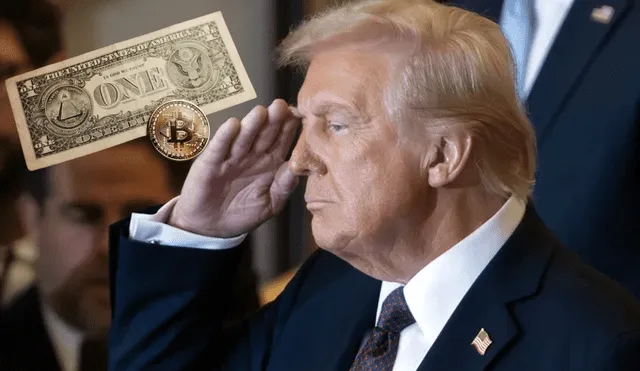Trump Saves Private Banking And Then Launches His Own Digital Dollar
In March 2025, the company World Liberty Financial, backed by Trump, launched the stablecoin USD1, pegged to the dollar and backed by U.S. Treasury bonds.
- Reintegro 3: estos beneficiarios del Fonavi no podrán cobrar en abril la devolución de aportes en Banco de la Nación
- Retiro CTS y ONP: Congresistas sustentan proyectos de Ley, pero debate sobre AFP sigue estancado

On January 23, 2025, President Donald Trump signed Executive Order 14178, prohibiting the development of a central bank digital currency (CBDC) in the United States. This measure protected the role of private banking in the creation of digital money and prevented the centralization of financial power within the state.
However, in March 2025, World Liberty Financial, backed by Trump and his family, announced the launch of a stablecoin called USD1. This cryptocurrency, pegged to the U.S. dollar, is backed by U.S. Treasury bonds, dollars, and other cash equivalents. It will initially be implemented on the Ethereum and Binance Smart Chain blockchains, with plans to expand to other protocols in the future.
This move appears contradictory: while Trump blocks a state-issued CBDC to protect financial decentralization and private banking, he simultaneously supports a private digital currency. The key difference lies in the issuer: a CBDC centralizes control in the government, whereas a private stablecoin like USD1 keeps digital money issuance in the hands of the private sector, preserving competition and the decentralization characteristic of financial capitalism.
By launching USD1, Trump and his team aim to position the U.S. as a leader in digital financial innovation, offering a private and decentralized alternative to state-controlled CBDCs that other countries are developing.
What is Bitcoin and how does it work?
Bitcoin is a digital currency that operates without banks or governments. It’s like internet money, but decentralized.
- Blockchain: A public ledger where all transactions are recorded.
- Mining: Computers verify and confirm transactions by solving mathematical problems.
- Digital wallets: Bitcoins are stored in apps or special devices.
- Limited supply: There will only ever be 21 million Bitcoins, making it scarce and valuable.
It is used to buy things, invest, or save, although its price fluctuates significantly.
How much is 1 Bitcoin in USD?
In the last 24 hours, Bitcoin’s price has increased by 0.04%, meaning a small rise in value. If yesterday it was approximately $82,360, today it has gone up by $33, reaching $82,393.